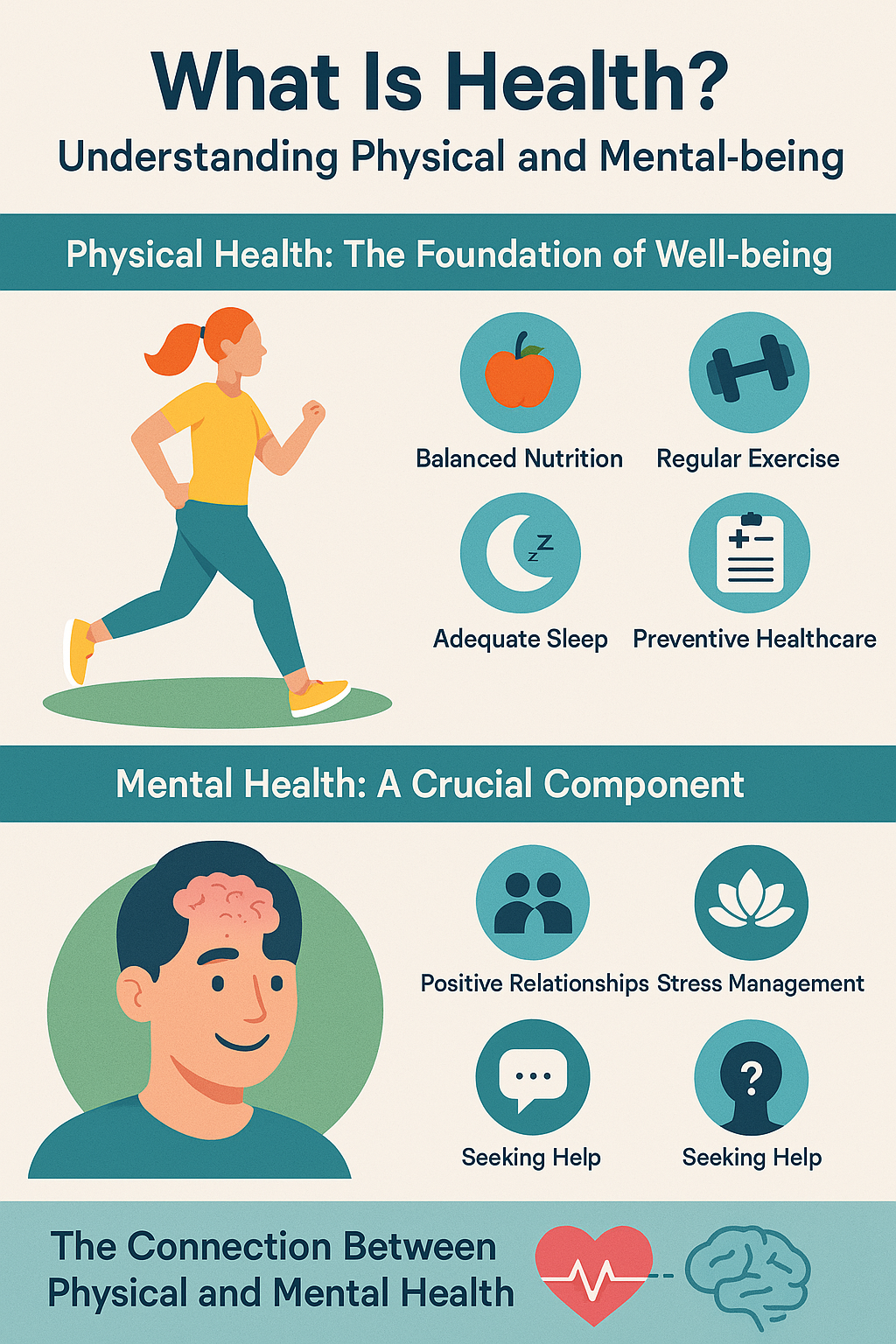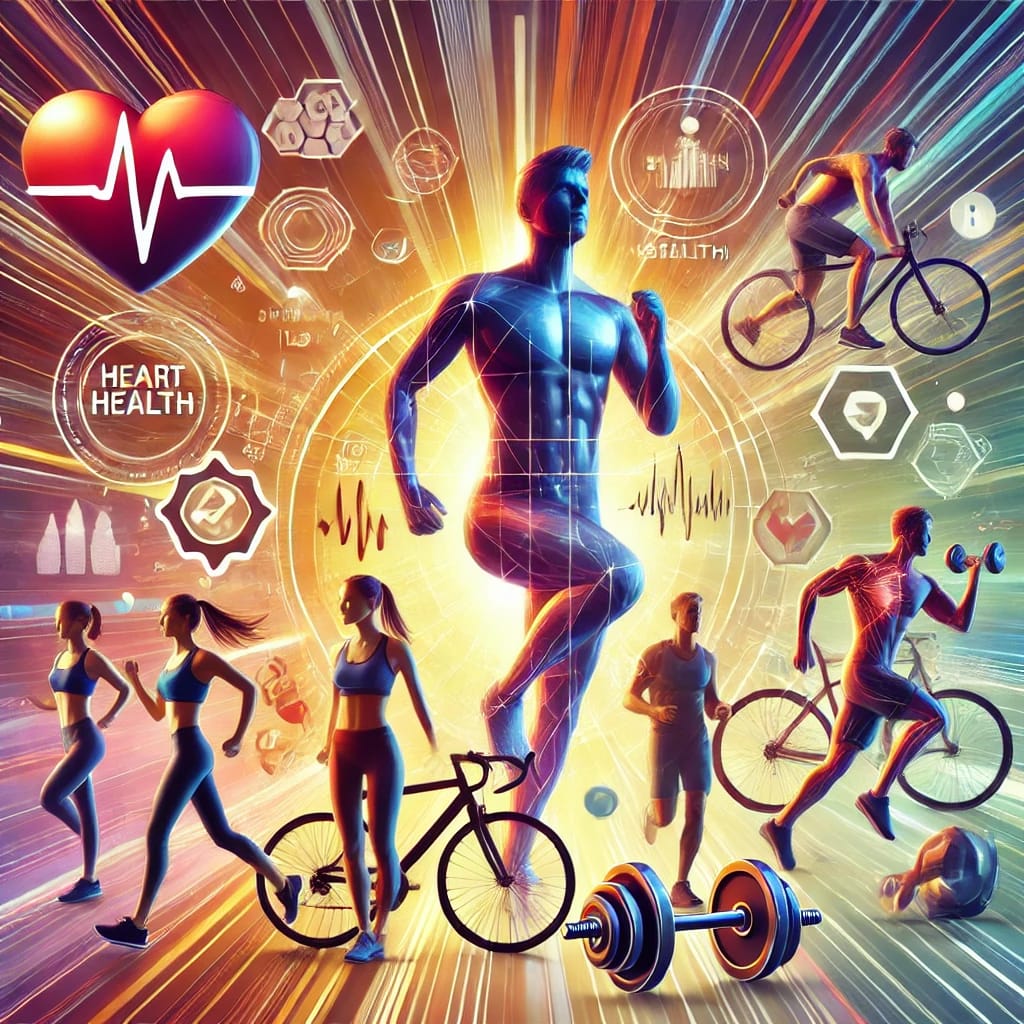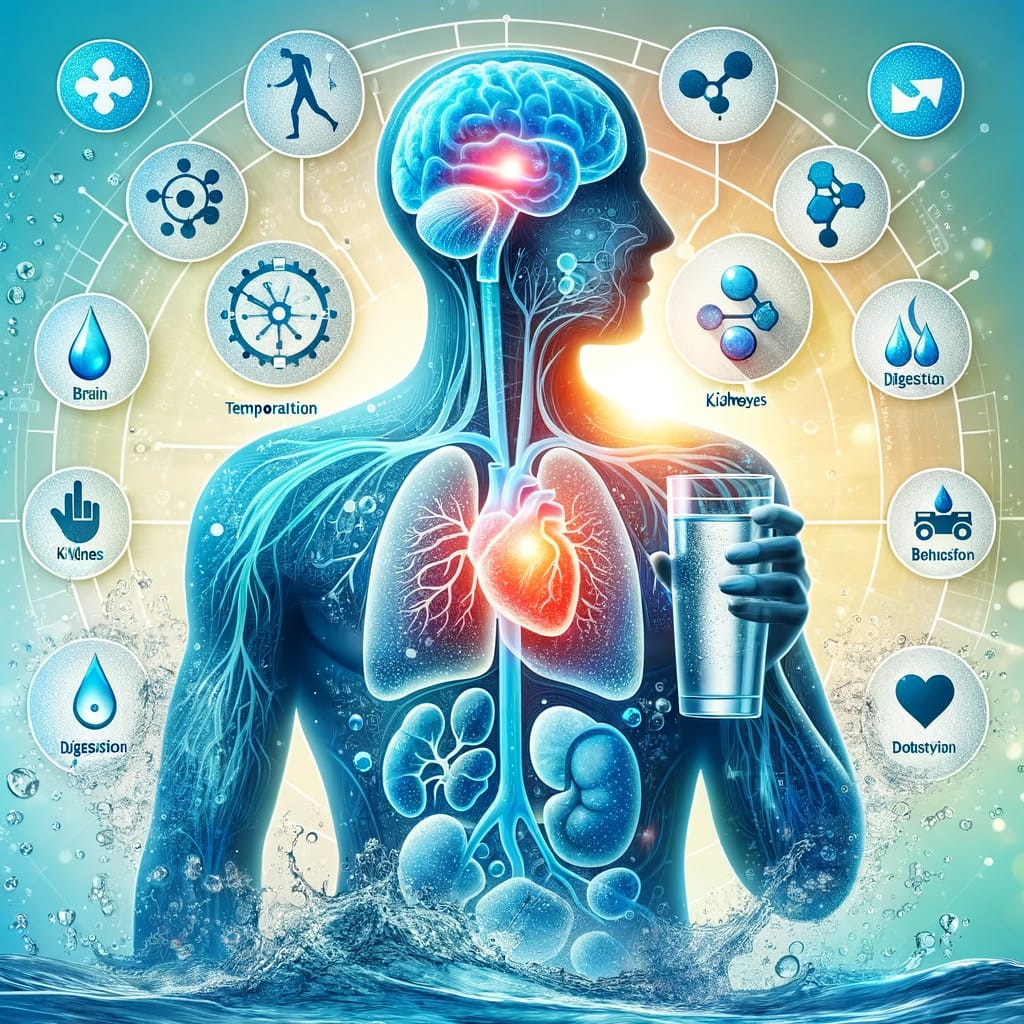Health is more than just the absence of disease; it is a state of complete physical, mental, and social well-being. The World Health Organization (WHO) defines health as a dynamic process that allows individuals to lead productive and fulfilling lives. Understanding health involves exploring its different aspects, including physical and mental well-being.
Physical Health: The Foundation of Well-being
Physical health refers to the proper functioning of the body’s systems. It is influenced by factors such as nutrition, exercise, sleep, and medical care. Here are some key elements that contribute to good physical health:
Balanced Nutrition: Eating a diet rich in fruits, vegetables, lean proteins, and whole grains provides essential nutrients that support bodily functions.
Regular Exercise: Engaging in physical activities such as walking, running, or yoga helps maintain cardiovascular health, muscle strength, and flexibility.
Adequate Sleep: Quality sleep is crucial for the body’s repair and rejuvenation processes.
Preventive Healthcare: Regular medical check-ups, vaccinations, and early detection of diseases contribute to overall health maintenance.
Mental Health: A Crucial Component
Mental health is equally important as physical health. It involves emotional, psychological, and social well-being, influencing how individuals think, feel, and behave in daily life. Here are some essential aspects of mental health:
Emotional Resilience: Developing coping mechanisms to deal with stress, anxiety, and challenges enhances mental well-being.
Positive Relationships: Social connections with family, friends, and colleagues provide emotional support and reduce feelings of isolation.
Stress Management: Practices like meditation, mindfulness, and deep breathing help in managing stress effectively.
Seeking Help: Consulting mental health professionals when needed ensures timely support for mental health conditions.
The Connection Between Physical and Mental Health
Physical and mental health are interconnected. Poor physical health can lead to stress and anxiety, while mental health issues can impact physical well-being. For example, chronic stress can lead to high blood pressure, while regular physical activity can boost mood and reduce depression.
Conclusion
Achieving overall health requires a balanced approach that addresses both physical and mental well-being. By adopting healthy lifestyle habits, staying active, managing stress, and seeking medical advice when necessary, individuals can lead healthier and more fulfilling lives. Health is a lifelong journey, and taking proactive steps towards well-being is essential for a happy and productive life.
Reduce Stress with Flutter Bees Game
Looking for a fun way to reduce stress? Try the Flutter Bees game! This engaging clicker game and bee hive defense challenge help you relax while tapping your way to higher scores. The game offers rewarding experiences as you watch your points increase and complete various in-game tasks. Playing games like Flutter Bees can be an enjoyable way to unwind and relieve stress. Check it out here: Flutter Bees








Leave a Reply